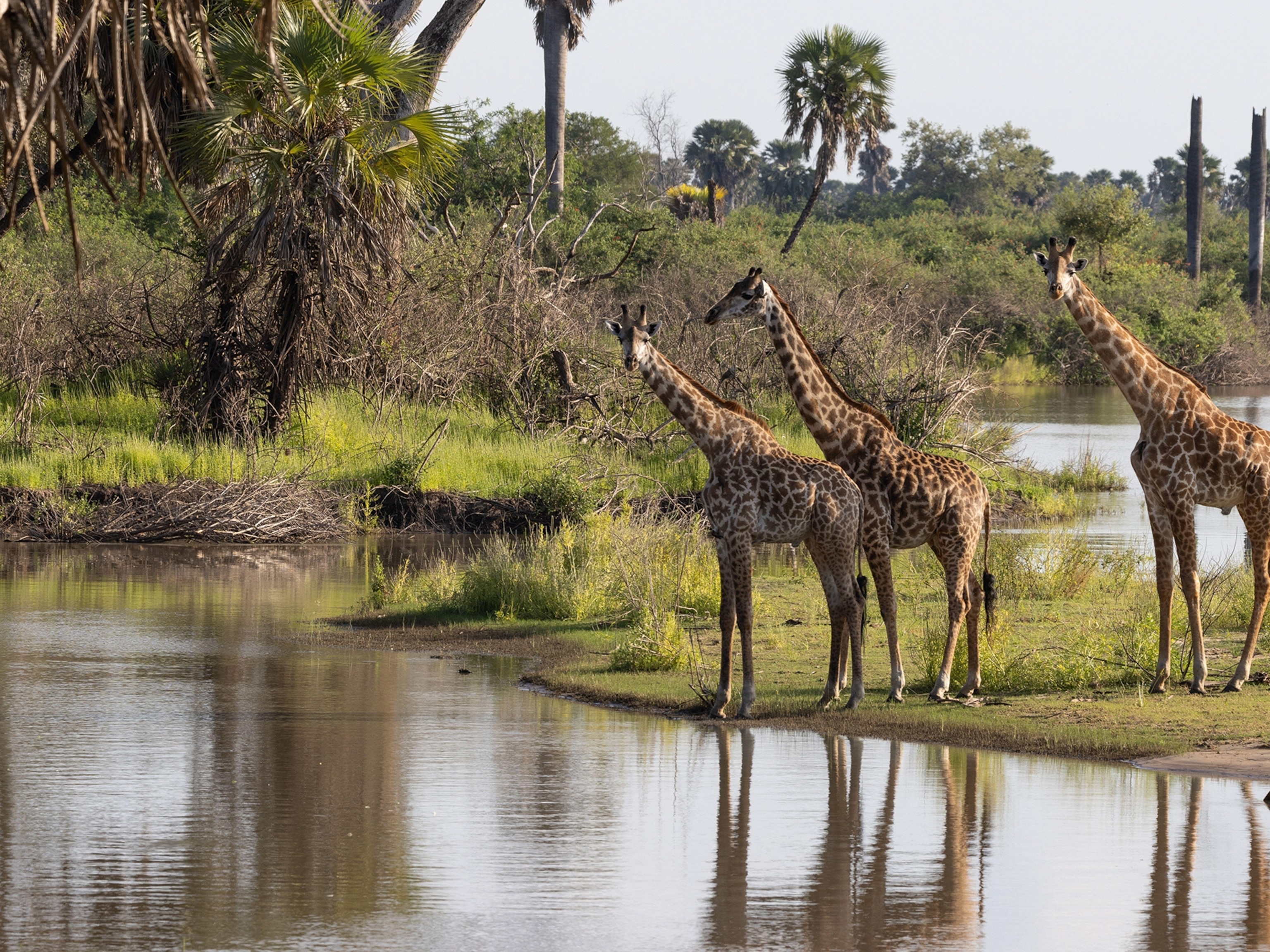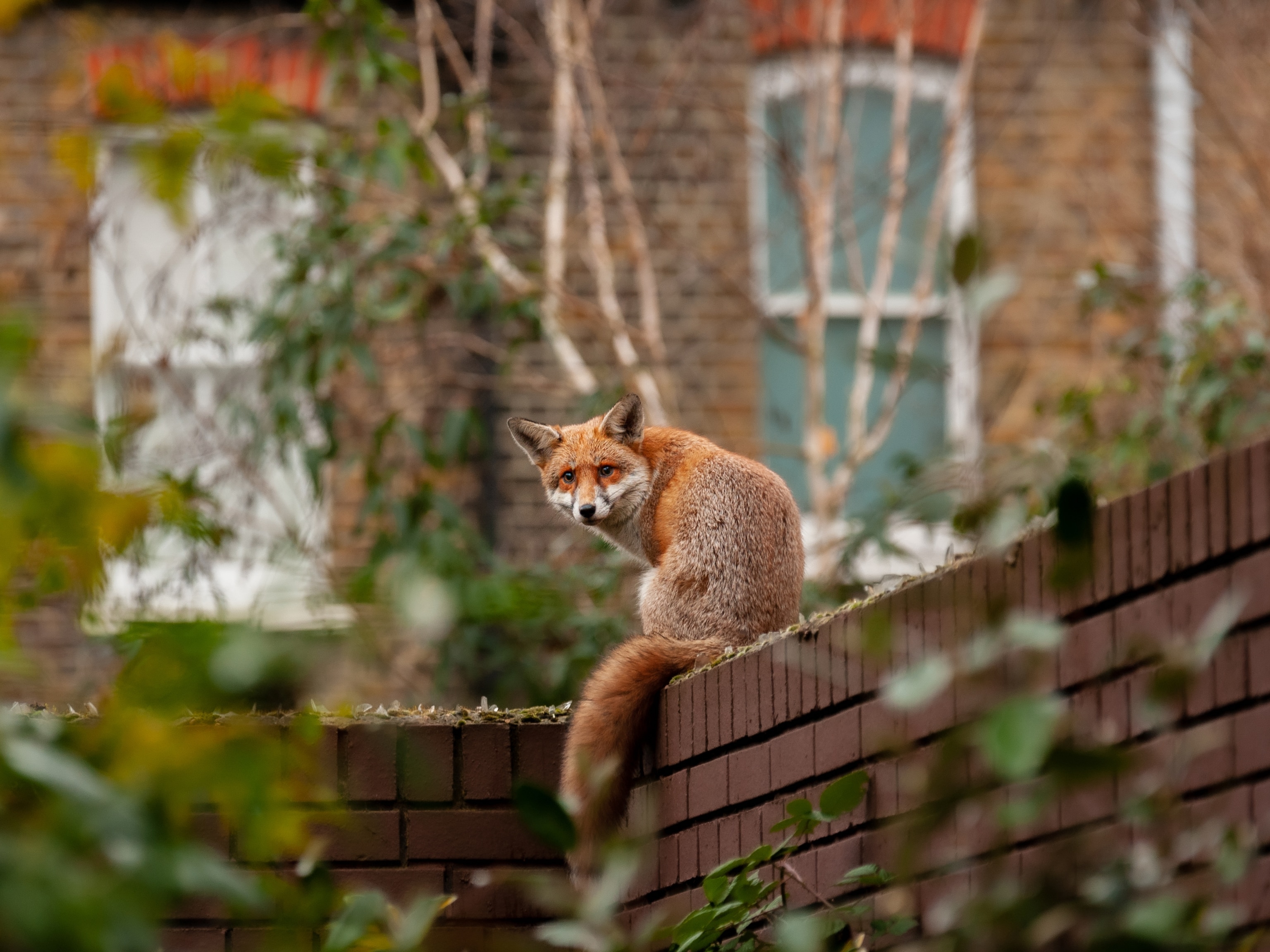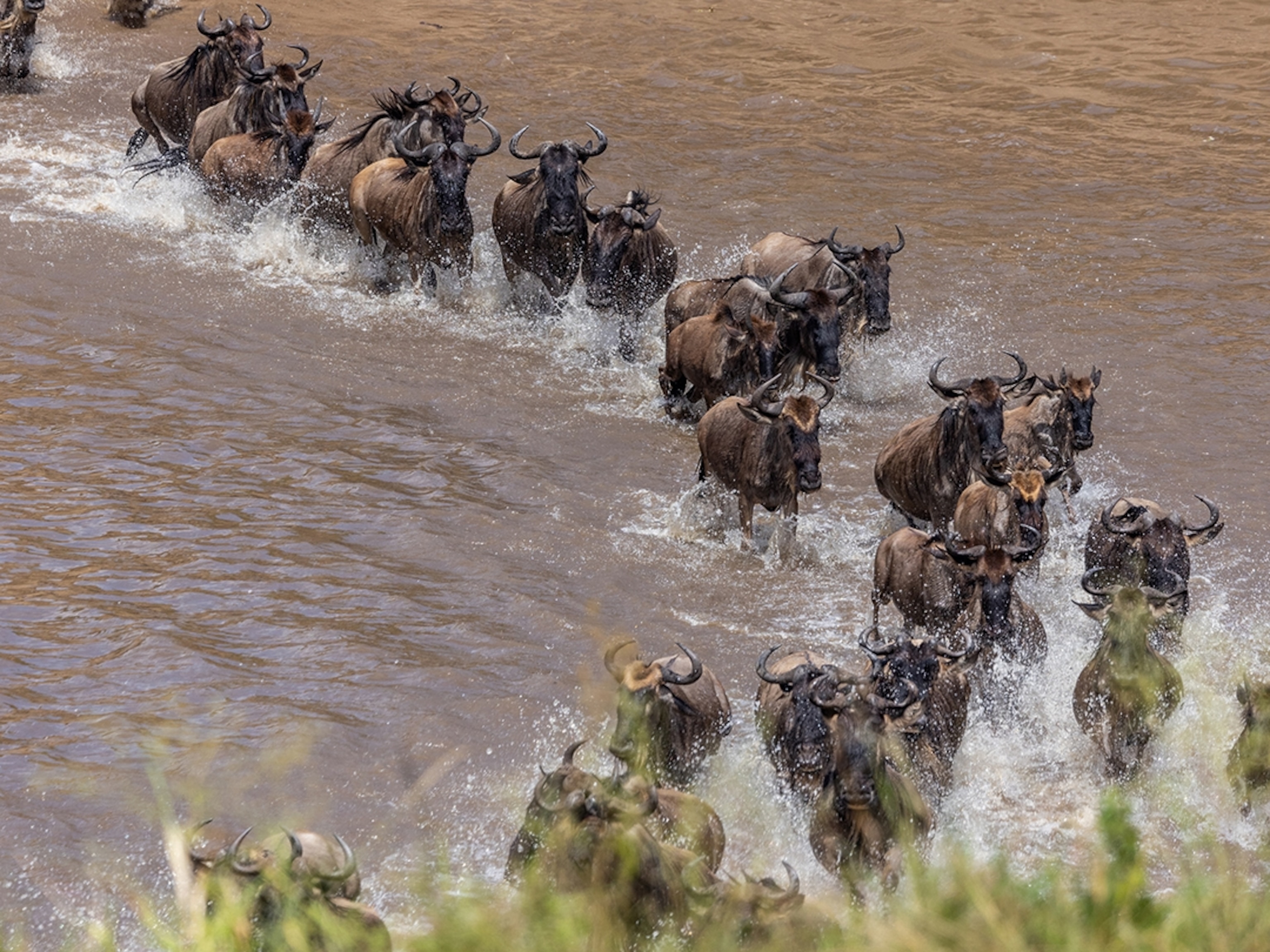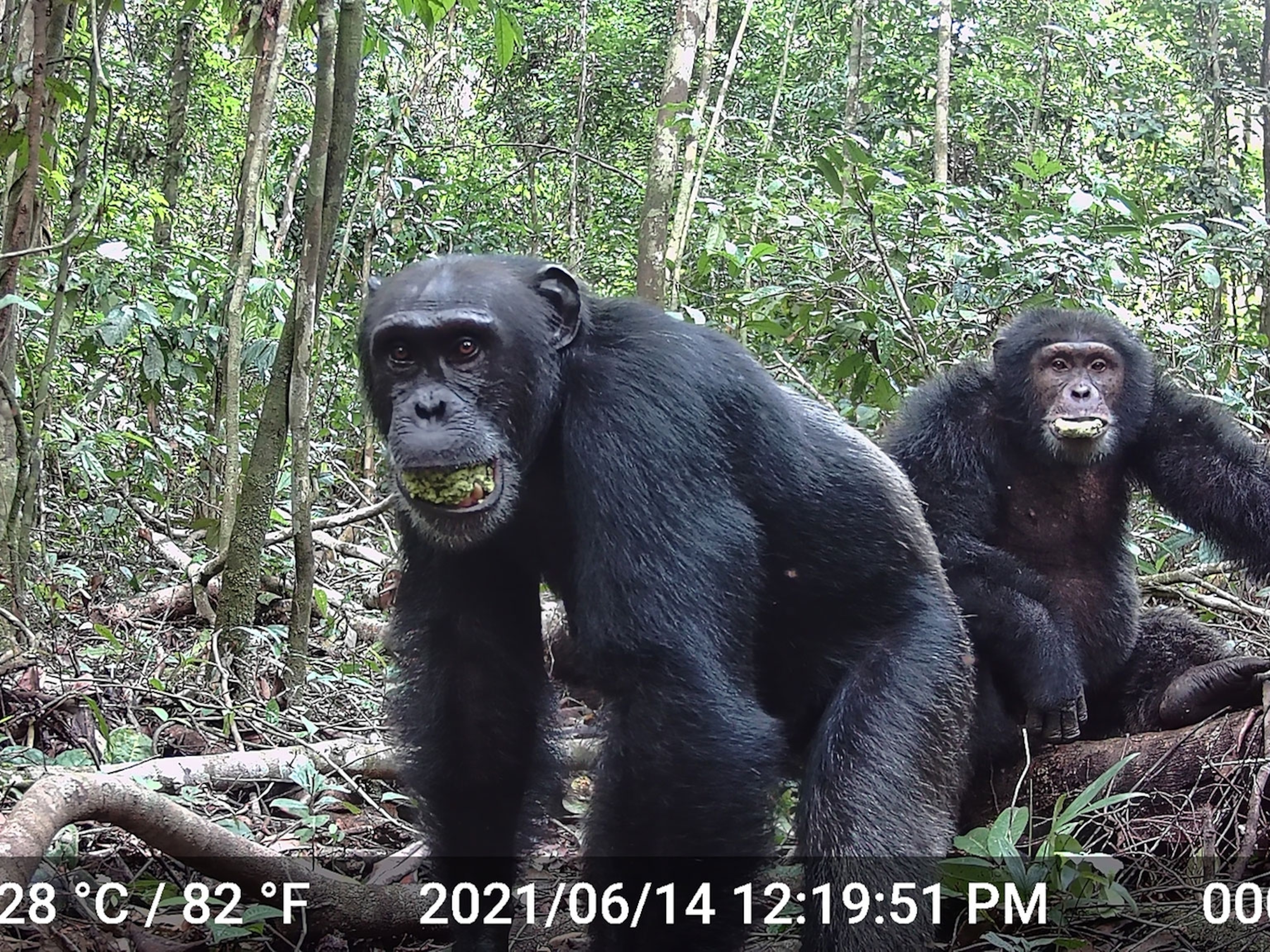Wildlife Heroes Arthur Middleton and Joe Riis
An ecologist and a photographer come together in the Greater Yellowstone Ecosystem to combine science and stunning imagery to shine a light on why wildlife needs freedom to move.
In the summer, the elk of the Greater Yellowstone Ecosystem migrate as far as 100 miles from the surrounding valleys, over 11,000-foot mountain passes, to the safety of Yellowstone National Park’s lush meadows and high plateaus. Beneath the gaze of millions of tourists, the creatures have become an icon for the National Park System, but what most visitors don’t realize is they are seeing only a small snapshot of their existence. While much of the elk’s summer habitat exists inside of federally protected land like Yellowstone and Grand Teton National Parks, the wintering grounds in the valleys of Wyoming, Montana and Idaho exist on a complicated patchwork of state, federal, and private land where changing management practices and human barriers like fences and roads can strongly affect the fate of these herds.
“Some of the coolest wildlife migrations in the world are happening right in the middle of the United States,” says wildlife photojournalist Joe Riis, who has been photographing wildlife migrations in the region for the last eight years. “People just don't know about them because they don't see them.”
Two years ago, Riis and wildlife ecologist Arthur Middleton set out to change that with an unconventional, cross-discipline project to map and document the Greater Yellowstone elk migrations. It would require brains, creativity, and traversing stretches of some of the most rugged mountains in the lower 48. Middleton and Riis planned for the project to generate scientific journal articles , world-class photography, a short film, and a touring museum exhibition, “Invisible Boundaries.” They hope it would reach the hearts and minds of not only the people who call the northwestern corner of Wyoming home, but Americans at large. Having received the support of three National Geographic Expedition Council grants, the story will appear in the May 2016 edition of National Geographic magazine, which will be wholly focused on the Greater Yellowstone Ecosystem.
Using existing GPS collar data shared by the agencies and universities of the region, Middleton, 36, created a detailed map of the elk migrations. He found a big hole in the available information – a huge swath of the Absaroka Range between Cody and Jackson, Wyoming – and caught elk so he could fill them. Then the duo put the incoming data to work. They spent two summers following one of the more mysterious migrations, that of the Cody elk herd, from some of Wyoming’s oldest and largest ranches, over high, snow-filled passes, and across the raging spring rivers of the Absarokas just to the southeast of Yellowstone National Park. Each summer they found the elk on the high plateaus of the Thorofare, one of the remotest places in the lower 48. All in all, they covered 1,500 miles on horseback over the course of two summers with the help of six Cody-area mountain guides. Riis, 31, spent much of this time working photo traps—remote, motion-activity cameras placed along wildlife pathways—some of which were 30 miles from the nearest road.
“This type of photography takes time,” says Riis. “I need to show the energy and pulse of migration. If I make one good photograph a month, I’m doing good.”
“I think that we really need to re-imagine Yellowstone as a park that is inextricably connected to a wider world—a wider world that it gives many riches but to which it’s also vulnerable,” says Middleton, who works at Yale’s School of Forestry and Environmental Studies, but has spent much of the last eight years in northwest Wyoming. “For me and Joe, a lot of the fieldwork is to put feet on the same trail the animals are walking and be able to understand and talk about it beyond just GPS locations on a map.”
Many of the elk start on private lands, which they depend on for half the year. Following the same routes year after year, the elk’s hooves can carve paths into the high country’s exposed rock. Along the way, the elk population sustains an entire ecosystem of predators like bears and wolves. When the elk are free to migrate, they can eat more and produce more offspring. This in turn benefits the ecosystems as a whole. Both Riis and Middleton believe that for this corner of Wyoming, which depends on tourists drawn to both Grand Teton and Yellowstone National Parks’ abundant wildlife and hunters chasing game, healthy wildlife ties directly to the region’s economics and culture. It’s their hope that the work will eventually unite communities to protect the migratory pathways leading in and out of Yellowstone National Park and beyond. They both note that five other hoofed mammals migrate across the Greater Yellowstone and throughout the West, and some of them, such as mule deer and pronghorn, face very significant obstacles.
“Science should not just be words on a page—which is what it's been for way too long,” says Middleton. “It needs to go further with a life in photographs, film, and the arts, all at once. I think for both me and Joe personally, we have to see it and feel it and experience it in order to be an ambassador for it ... That’s why we each have to spend so much time in the field.”
—Fitz Cahall
THE INTERVIEW
Adventure: As a creative and scientist, what’s the advantage of working together?
Joe Riis: When Arthur and I met, I thought, "Wow, I can do a lot more by partnering with a scientist rather than working solo in a creative vacuum. Which gives me the opportunity to put my work in front of the decision-makers that need to see it. For example, just two weeks ago we were having dinner with the directors of several federal agencies talking about migration and the Greater Yellowstone. That type of gathering would not have happened if I wasn't working directly with Arthur on this project … My photojournalism and creative work will have much more impact if rooted in sound science.
Arthur Middleton: The photos that Joe makes and the video that he produces strengthen the science and I think the science strengthens the message that the visual image can deliver.
A: You two have been working in this region for eight years at this stage. What about this chapter of your efforts stood out?
JR: Prior to this project, I had no idea that these elk journeys were so important and significant to the local communities like the pronghorn and mule deer migrations are in other parts of Wyoming. In addition, I thought the elk fieldwork would involve lots of backpacking my gear into the mountains like I did with pronghorn and mule deer projects. However, with Arthur, we quickly learned that the Absaroka mountains are bigger and more remote and that we needed horse and mule support to live and work in these mountains. The distances are too vast and the mountains are too steep to backpack all of our gear and food. The closest camera trap location to a two-track road is about eight miles, and the farthest camera location I have is 30 miles away, which is a long horse ride to check 1 camera, but definitely worth it.
AM: Learning about the ecosystem of human beings that also sustains Yellowstone and these wildlife. We have found so many people, gained help and deep knowledge from so many people, who care deeply about these issues but are often overlooked when we imagine Yellowstone as a wilderness in a box.
A: Why Yellowstone and the surrounding area?
- National Geographic Expeditions
AM: When I first went out as a new grad student to the University of Wyoming, I drove over a high pass to look at my potential study area, Dead Indian Pass just east of Yellowstone Park. This was in 2007. I just was totally stunned by what I saw and knew I wanted to work there.
A: What do you hope people take away from this project?
JR: My goal is to show people what migration looks like and make pictures that are unforgettable. My hope is to encourage people to think about the needs of wild animals that migrate, often traversing several human land boundaries during their annual migrations. From national park land, to forest land, to BLM land, to private land, these animals need the freedom to move across them with the seasons. In other words, they need the freedom to roam..
AM: Their migrations are why they can remain abundant. Their abundance is why they can sustain predators and scavengers and hunting and tourism. Hopefully, we can provide some strong inspiration for people to look more closely at how we can sustain those migrations and therefore all those different benefits they provide us, and their beauty in perpetuity.
A: On a personal level what did you take away from this project?
AM: It has renewed a sense of the power of science and discovery that I had started to lose after years of the daily grind ... By the end of this last summer, I was at the end up of my rope from all the work we'd been doing, and yet it's only been a month and a half and I was looking back at some video today and feeling nostalgic and kind of like, "Is that over?" I would definitely say that it's been the adventure of my lifetime.







